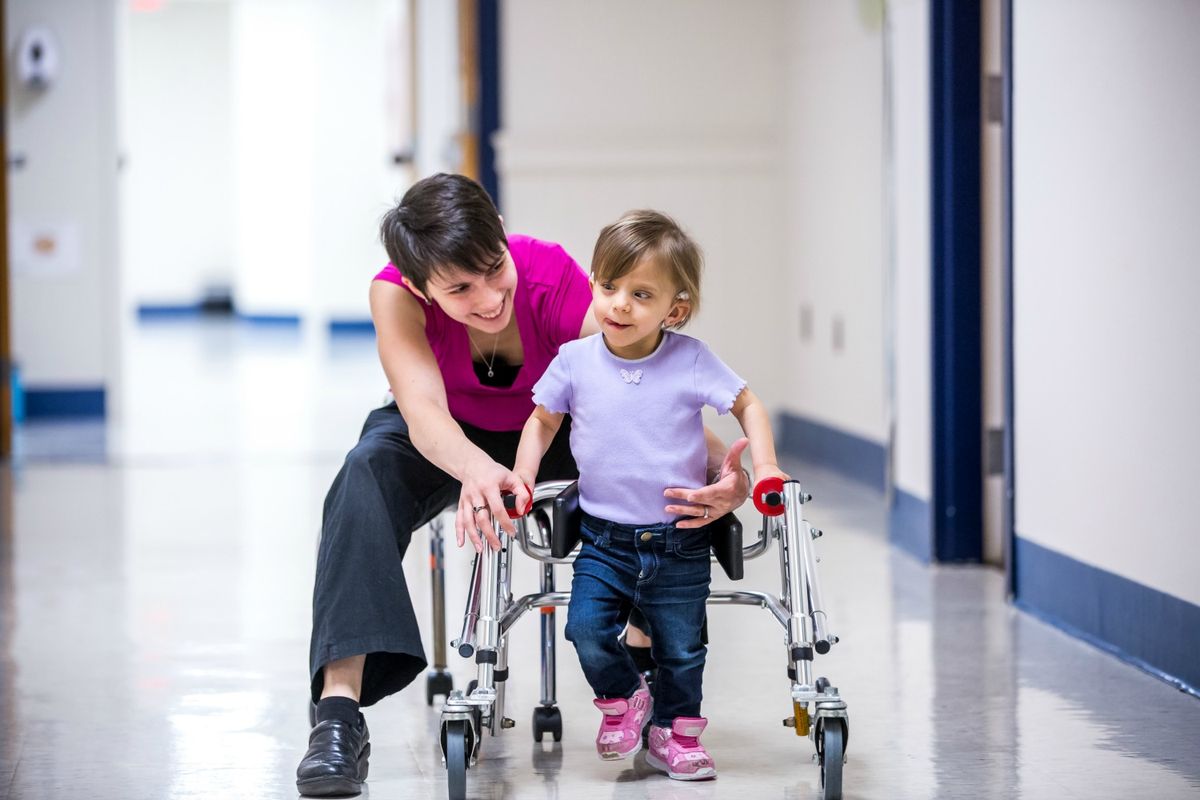The diagnosis of a bone or limb deformity in a child can be scary for parents, and the term “surgery” may seem daunting. However, the good news is that the majority of pediatric orthopedic deformities are treatable without surgery — provided they are diagnosed early and treated by a specialist who has expertise in children’s musculoskeletal health.
With pediatric orthopedic care advancing, nonoperative treatments are now effective at treating a whole spectrum of skeletal deformities affecting young children. Not only are these methods exempt from the risks involved with surgery, but they will also more importantly work in harmony with the child’s natural growth pattern to make corrections smoother and more gradual.
Understanding Pediatric Deformities
Children’s deformities can be congenital (at birth) or developmental (develop as the child ages). Some of the most prevalent are:
- Flat feet
- Bowlegs (Genu Varum)
- Knock knees (Genu Valgum)
- In-toeing and out-toeing
- Limb length differences
- Clubfoot
- Spinal deformities such as scoliosis
While others go away on their own, some might require close orthopedic treatment — not always surgery.
Why Early Diagnosis Matters
Children’s bones are still developing, making them extremely adaptable. This flexibility creates a window of time which is absolutely crucial to control the natural righting of deformities. Pediatric orthopedic specialists have learned to evaluate these deformities with a long-term perspective, taking into account how the growth of the child will impact bone alignment, posture, and function down the road.
With intervention early on, non-surgical interventions can avoid a minor deformity from worsening or even cure the condition of surgery altogether.
Non-Surgical Procedures Employed in Pediatric Orthopedics
Some of the most popular non-invasive techniques employed to correct deformities in children include:
- Bracing and Orthotics
Custom-fit braces and orthotic appliances are often employed to slowly realign bones and joints into better alignment over a period of time. They’re especially useful in scoliosis, knock knees, clubfoot, and limb length inequality.
- Serial Casting
In cases such as clubfoot, toe-walking, or mild deformities, serial casting is very effective. Soft casts are applied and remolded every week or fortnight to gradually correct the deformity as the child grows normally.
- Physiotherapy
Therapeutic exercise and directed physical therapy strengthen the muscles that stabilize bones and joints, enhancing function and alignment. Muscle imbalance is the cause of deformity in most instances, and its correction through exercise minimizes the necessity for surgical correction.
- Growth Modulation
In some instances, orthopedic physicians may employ growth modulation procedures like guided growth plates, which gently influence the manner of bone growth. This is a technique that utilizes the body’s own growth pattern and is very minimally invasive — in many instances, no surgery at all is performed.
- Activity Modifications and Monitoring
Certain deformities are noted but not treated aggressively, particularly if they are minor. The expert can suggest alterations in everyday habits, posture adjustments, or changes in activity, with follow-up monitoring to see that the condition gets better with the passage of time.
Advantages of Non-Surgical Treatment
- Less invasive, low risk
- No general anesthesia required
- Less expensive and faster recovery
- Child-friendly and flexible
- Promotes natural development and correction
Most importantly, non-surgical care focuses on preventive correction, meaning long-term issues are avoided with the right treatment at the right time.
The Role of a Pediatric Orthopedic Specialist
General orthopedic doctors may not have the expertise required to treat growing bones and joints. Pediatric orthopedic specialists understand the nuances of a child’s developing skeleton and can accurately assess:
- What’s normal for the child’s age
- Whether intervention is needed
- The most effective, safest treatments
In many cases, a non-surgical, customized treatment plan is the only prescription needed to guarantee that the child develops with healthy mobility and alignment.
Conclusion
Not every deformity in children needs to be corrected surgically. In reality, many can be treated safely and effectively by non-surgical orthopedic means, particularly if detected at an early stage. Bracing, casting, physical therapy, and techniques of guided growth can each have a role in gradually fixing deformities without interrupting a child’s life or development. The secret is to obtain an early assessment by a pediatric orthopedic specialist.
If your child shows signs of bone or limb deformities, consult Dr. Rajeev Nirawane, a trusted Pediatric Orthopedic Surgeon with deep expertise in non-surgical and growth-friendly treatment methods. Practicing at Hadapsar, Pune, Dr. Nirawane focuses on safe, effective, and child-centered orthopedic solutions that respect your child’s natural growth and development. Early intervention can make all the difference in helping your child grow strong and healthy — without the need for surgery.
